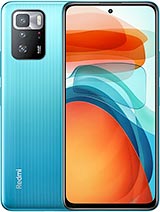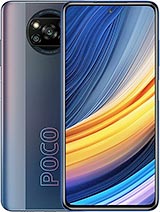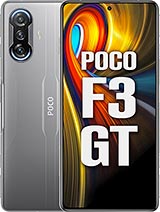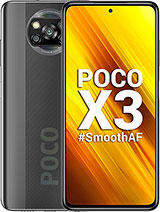Xiaomi Poco X3 GT vs Poco X3 Pro | Which is best for you? By Tech Spurt
So Xiaomi has just launched this bad boy here globally, it's the Poco x3 gt, an impressively spec'd budget friendly, smartphone Boston, 5g, you've got a 120hz IPS display a big old battery with 67 watt, fast charge, support and a fresh new bit of MediaTek dimensions, the 1100 action. But the big question is: how does it stack up to its excellent sibling? The Poco x3 pro, which launched earlier in 2021? Well, I'm going to do your full side by side. Comparison of all the specs features, the camera tech performance, all that good stuff so which pocket phone is best for you, let's find out and for more on the latest and greatest tech. Please do poke subscribe and ding that notifications bell cheers so. First up. Stick the Poco x3 pro right next to the fresh new x3 gt and yeah you'll, probably struggle to tell them apart.
The Poco x3 gt is slightly smaller at 6.6 inches versus the 6.67 inch Poco x3 pro, but you'd have to look really bloody close to notice that that's for sure, and certainly when you're handling them, they feel identical. You've got reasonably slender bezels surrounding those displays for budget-friendly smartphones, at least that does seem to be a slightly smaller orifice for the selfie camera up here on the Poco x3 pro versus the gt. We are talking mere margins, though, but there is one invisible difference between the two as well. You've got a gorilla glass six caught in here on the Poco x3 pro screen to help protect it from damage that actually gets upgraded to gorilla glass Vitus here on the Poco x3 gt. That means the Poco x3 gt should be more resistant to damage from drops, but I have found that gorilla glass victors does tend to scratch up a bit more easily than gorilla glass 6.
So it is therefore a bit of a shame that you don't get a pre-installed screen protector on the x3 gt, while you do on the Poco x3 pro, if you really notice a difference when you actually flip these smartphones over and have a gander at the ass end, because, as you can see, there, you've got completely different design, although it is a glossy plastic back end on both of them. I've got to say my least favorite of the two is definitely the Poco x3 pro. I just find it a little fugly. It certainly looks very budget indeed, and that massive brand in there on the back end certainly isn't helping, whereas the buckle x3 gt sure it isn't particularly striking or anything, but it does look very smart and sleek, and thankfully they calmed right the down when it came to the Brandon of this thing, you've got a choice of colors with both of these the Poco x3 pro comes with a choice of black bronze or blue. Meanwhile, the gt comes in stock.
Is black you've also got cloud white or wave blue and touch wood, even though it is a plastic back on both of them. They both seem quite resistant to damage so far, no scratches or scuffs to speak of and the pocket x3 pro I've had for a good few months now, still looking almost pristine, just one tiny little scratcher at the bottom, which you can barely even notice, do a quick tour of the rest of these poor smartphones. You'll see both of them support an edge mounted fingerprint sensor over on the right side. You've got an IR blaster up top if that's something you're into, but the bad news is that only one of these smartphones sports, a headphone jack, and it's the Poco x3 pro you don't get one on the gt. Now it's time for a hot bit of OS action and as you'd expect.
Both these pocket smartphones basically run on the same software. You've got android 11 with Xiaomi's mini, 12 slatted on top and anyone who's seen any of my Xiaomi or Poco smartphone. Unboxing and reviews will have talked about me UI to death, but basically in version 12, it's about stock as you're going to get from a mini launcher. You've got the likes of the apps' tray. You've got the Google discover feed, but mini adds plenty of bonus bits, including likes the control center, which you can drag down from the right edge of the screen, which gives you fast access to all kinds of toggles and also your smart home goodies.
If you dive right into the settings menu as well, you'll see basically got the exact same set of features uh packed way in there. You'll notice a couple of little subtle differences here and there so, for instance, the pocket at pro is the only of the pair to support an actual notification LED light built in up at the top here, but yeah overall, very similar you've got the likes of the special gaming mode. You've got the video toolbox, all that good stuff, as I mentioned before, both of these pocket smartphones, Boston, edge, mounted fingerprint sensor that is fast and responsive. So definitely very satisfying to use, and you've also got a bit of face, unlock support as well, which is again super, super swift. You don't even see that lock screen more often than not, although it's not the most secure, because it does seem to work even when your face is mostly uh completely covered with a good old face mask and both the Poco x3 pro and the Poco x3 gt offer a choice of 128 or 256 gigs of UFS, 3.1 storage for your apps and media and all other shenanigans. But if you want to expand that, while the Poco x3 pro is the only one to support micro SD memory cards, you don't get that on the gt.
Now. The screen tech is basically almost identical between the Poco x3 gt and the Poco x3 pro. You got 6.67 inch on the pro slightly bigger than the 6.6 inch on the Poco x3 gt, but they're both IPS panels, both full HD plus you get reasonably crisp visuals, despite the fact they are pretty goddamn spacious got full HDR 10 supports a strong contrast, despite the fact that they are just IPS panels. You've got support for that streaming in the likes of Netflix. Both screens are bright enough to use outdoors if needed, and you've got slightly warmer color reproduction on the Poco x3 gt versus the Poco x3 pro when they're on the default auto settings uh, that's pretty much.
The only difference in the visuals that I noticed the auto brightness does unfortunately, occasionally struggle a bit on both of these smartphones. When you're in the low light environments, it can be a little too dim, so you will have to manually bump it up yourself. You've got the usual display features on both of these, though including the likes of the reason modes. You can mess around with the color output. If you want to get things a little more punchy a little more natural, looking whichever you prefer.
As for the refresh rate. Well, it is dynamic, and it can basically swap anywhere between 30 and 120 hertz to match whatever you're up to and save battery life. When you don't need that faster refresh, you've got a stereo speaker setup on both the Poco x3 pro and the Poco x3 gt as well. Let's just do a little side-by-side comparison on max volume, called x3 gt, also the first of the x family to boards to full 5g smarts. This phone is powered by the MediaTek damage.
That's the Poco XD pawn now the gt x3 gt, also the first of the x family to balls to full 5g smarts. This phone is powered by the MediaTek dimensions, so not a tremendous amount of difference in the output on the speakers, they're the poke x3 port ever so slightly louder than the Poco x3 gt, but also slightly tinier on that top volume as well. You got a bit more of a full-bodied sound out the x3 gt more natural sounding. So I think I probably prefer that one. If you don't want to use the speakers, you want to use a pair of headphones instead, where you got Bluetooth, 5.2 support and the fresher new Poco x3 gt slightly older Bluetooth, 5.0 support on the older Poco x3 pro, but I got a perfectly good wireless streaming experience for both of these blowers. However, the Poco x3 pro, as I mentioned before, is the only one of the pair to sport, a headphone jack, so you'll have to get all dongle up on the Poco x3 gt.
You want to take full advantage of that high-res audio certification. So now, let's have a shifty at the performance of these budget-friendly smartphones and while the older Poco x3 pro is powered by the seven nanometer snapdragon 860 chipsets. Here on the fresher x3 gt, you've got that new six nanometer MediaTek dimension 1100 chipsets, and this certainly produces good performance for the price point on both of these handsets. Otherwise, you can see here. The Poco x3 gt does have a slight advantage, certainly when it comes to the multitasking.
A smaller chipset size of the MediaTek here on the Poco x3 gt means it's also more energy efficient than the snapdragon found in the pro, and it's got the added benefit of integrated 5g modem action as well, so you've got full 5g support, spread across both sim slots. If you want to do a bit of gaming, though both of these pocket blowers will handle it, fine you've got a choice of up to eight gigs of ddr4 ram on both of these handsets and the likes of gentian impact. Quite a resource-hungry demand and android title can be played on both of these. Although I did see there was slightly less jaded on the Poco x3 gt on those default medium settings compared with the Poco x3 pro you've got coolant tech on both of these Poco phones as well. So no problems with overheating, even when gaming over a long lazy afternoon and 240 hertz touch sampling as well, so the screens are perfectly responsive and courtesy of me.
UI 12 you've also got dedicated gaming features thrown on here as well, allowing you to record your mad skills or change your voice if you're doing some sort of voice commentary and just generally free up resources, if you do find, the performance is starting to get a little. Stutter well, as mentioned before, the pocket. X3 gt, is the only one to offer 5g support, and it's also got built-in Wi-Fi 6 connectivity as well, which you don't get here on the Poco x3 pro. So as far as future proofing goes, the gt is the winner. Now the Poco x3 pro does offer the bigger battery of this pair, but we're basically talking a size difference comparable to a Nat's pub.
It's 5, 000 Williams on the Poco x3 gt, 5160 Williams on the Poco x3 pro, but no worries which one you choose, because you'll get a full day of play, even with plenty of intensive use plenty of screens on time. I'm doing like five six hours, lots of camera player, lots of media streaming, all that good stuff, a full charge will see you right the way through until when you're tucked up with teddy. However, when it comes to power and backup, the Poco x3 gt is the clear winner of these two. With It's superfast 67 watt, fast charging that'll power, you back up from empty to fall in about 40-ish minutes that gives the Poco x3 pro a bit more sedate at 33 watt, but still reasonably nippy about an hour at the plug will give you pretty much a full charge. Now, let's finish up with the squint at the camera, tech and while you've got a 48 megapixel primary sensor here on the Poco x3 pro that gets upgraded to a 64 megapixel primary shooter on the Poco x3 gt diving into the actual camera, apps you'll see that the general layout and the feature sets is basically the same.
You've got like the AI mode on both filters and all that good stuff got absolutely tons of bonus. Camera modes that you can play around with. If you want, including the ability to shoot at the maximum resolution, if you don't want to use the pixel binning, you've also got a pro photo mode as well. If you want full control over all the different elements, including the ISO levels, the focus, the shutter speed and again the ability to shoot at that maximum resolution. But most people, I'd imagine, would just leave it on the default photo mode.
The polo, x3 gt does seem to handle stronger light and more ably on that auto mode and also does a better job of producing natural. Looking colors, especially when you chuck on that AI mode, which sees the Poco x3 pro producing sickly, sweet, artificial results sometimes, but both can capture a respectful amount of detail. Despite the pixel binning, and you can grab good-looking portrait shots with either phone, even though the pro is the only one of this pair to sport, a 2 megapixel depth sensor. However, in low light, the poke, x3 pro actually outperforms, the Poco x3 gt, staffing out brighter more detail, packed shots at times, while the night mode on both handsets only helps out a very modest amount. If you find you want a more pulled out view of the action well, both of these smartphones also support an 8 megapixel ultra-wide angle, shooter and there's also a mostly pointless 2 megapixel macro lens on both of these handsets as well uh, which, to be honest, so low res.
It's basically useless. As for your home movies. Well, both the OK works 3 pro and the poker x3 gt can shoot full HD footage at 30 or 60 frames per second. Otherwise, you can bump up to 4k at 30, fps and so far, I'm pretty happy with the results on both the poker x3 pro and the gt as well. Definitely good for your horn movies, especially if you've got little sprogs, who just can't bloody stay still and last up.
You've got a 20 megapixel selfie cam on the Poco x3 pro versus a more basic 16 megapixels on the gt, and the pro definitely produces the better look and more natural selfies, a complete reversal on the rear camera performance. So there you have it that, in a nutshell, is the Poco x3 gt versus the Poco x3 pro both available for a good budget-friendly price here in the UK, which one are you more tempted by the gt or the pro definitely be great, to hear your thoughts down in the comments below. Please do pod subscribe and ding that notifications bell for more. The latest greatest tech got my full unboxing of both of these blogs live now and textbook. If you want an in-depth look at all the various features me UI, all that good stuff and have yourselves a fantastic rest of the week, cheers everyone loves you.
You.
Source : Tech Spurt




























